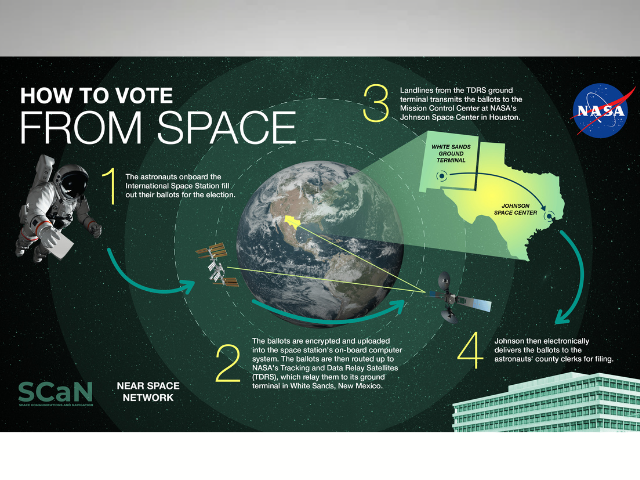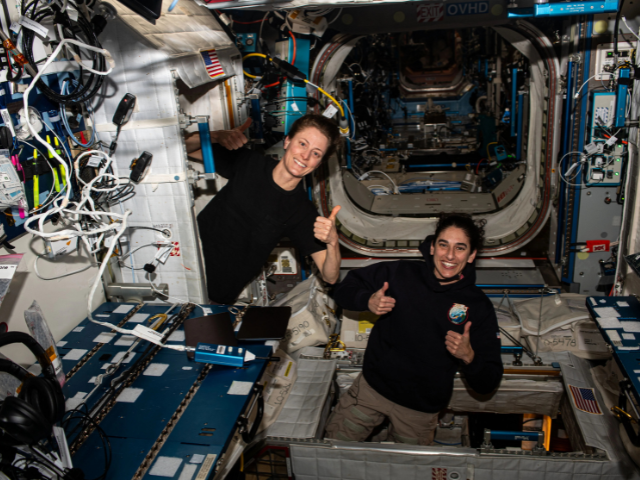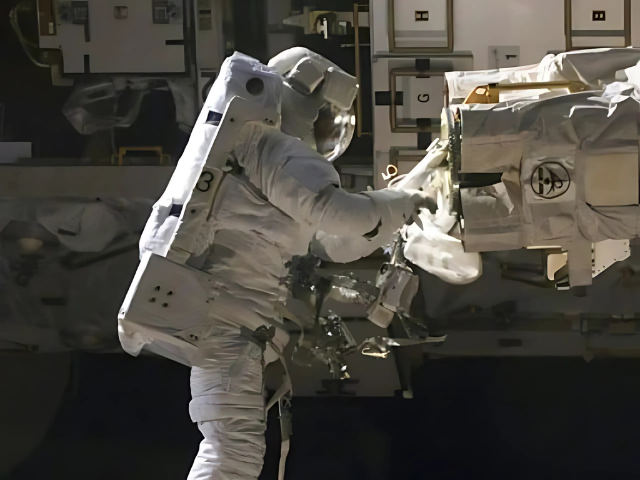As the United States gears up for its general elections in November, a unique question arises: how will NASA astronauts cast their votes from 46 kilometres above the Earth?
Astronauts aboard the International Space Station (ISS) have the opportunity to participate in elections using absentee ballots or early voting, all coordinated with the county clerk’s office where they reside.
This innovative process is made possible through NASA’s Space Communication and Navigation (SCaN) programme.
When an astronaut fills out an electronic ballot on the space station, the ballot is sent through NASA’s Tracking and Data Relay Satellite System to a ground antenna at the agency’s White Sands Test Facility in Las Cruces, New Mexico.
From there, NASA securely transfers the ballot to the Mission Control Center at NASA Johnson Space Center in Houston and then on to the county clerk responsible for processing the ballot.
To ensure the integrity of the vote, the ballot is encrypted and can only be accessed by the astronaut and the clerk.

NASA’s Near Space Network enables astronauts on the International Space Station to communicate with Earth and electronically deliver ballots from space.
Credit: NASA
Voting from space relies on data transmission similar to other communications between the ISS and mission control.
Votes cast in space travel through the Near Space Network, managed by NASA’s Goddard Space Flight Center in Greenbelt, Maryland.
This network connects missions within 1.2 million miles of Earth, providing crucial communications and navigation services, including for the space station.
Just like any other American living away from home, astronauts must complete a Federal Post Card Application to request their absentee ballots.
This process ensures they remain engaged in the democratic process while in orbit.
Astronauts have been voting in U.S. elections since 1997, when the Texas Legislature passed a bill allowing them to cast ballots from space.
That year, NASA astronaut David Wolf made history as the first American to vote from orbit while aboard the Mir Space Station.
More recently, NASA astronaut Kate Rubins voted in the November 2020 presidential election from the ISS.

NASA astronauts Loral O’Hara and Jasmin Moghbeli (from left) give a thumbs up after voting as Texas residents from the International Space Station.
Credit: NASA
While astronauts sacrifice many comforts of home during their missions, NASA’s communication networks keep them connected to friends, family, and the opportunity to participate in democracy.
Though they come from various parts of the United States, astronauts often reside in Texas, close to NASA Johnson’s training and support facilities.
For over two decades, astronauts have continuously lived and worked aboard the ISS, testing technologies and conducting scientific research.
They stay connected to their civilian lives back on Earth by communicating with mission control through the Near Space Network.
This advancement in communication not only benefits astronauts but also supports future missions, such as NASA’s Artemis programme and potential human exploration of Mars.







